- Share
- Like
- Tweet
- Digg
- Tumblr
- VKontakte
- Love This
- Odnoklassniki
- Meneame
- Blogger
- Amazon
- Yahoo Mail
- Gmail
- AOL
- Newsvine
- HackerNews
- Evernote
- MySpace
- Mail.ru
- Viadeo
- Line
- Comments
- SMS
- Viber
- Telegram
- Subscribe
- Skype
- Facebook Messenger
- Kakao
- LiveJournal
- Yammer
- Edgar
- Fintel
- Instapaper
- Copy Link
Australian design studio CHROFI has designed two concrete and stone structures that have been conceived as ruins in the New South Wales landscape. Titled Lune de Sang, the two sheds are part of a unique inter-generational venture that will see a former dairy transformed into a sustainably harvested forest. The project has recently won the Production, Energy and Recycling Category Award at the 2014 World Architecture Festival.
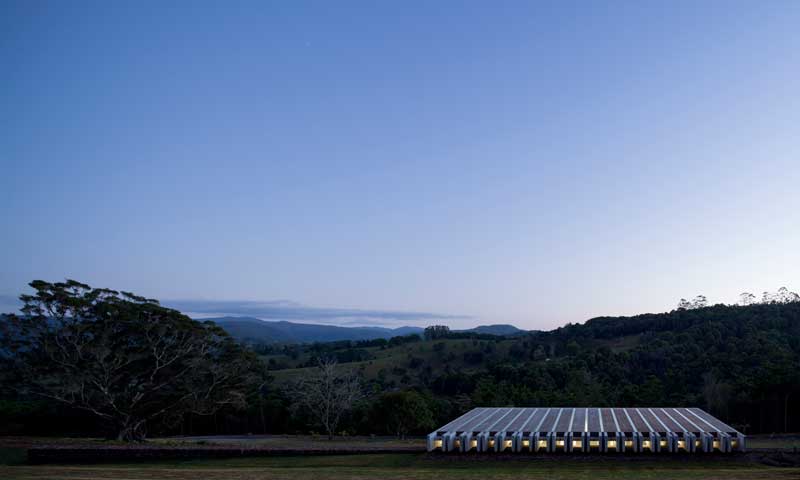
Image © Brett Boardman
The vision is exceptional in that rather than planting a fast growing crop, various hardwoods of the region have been chosen to establish a rainforest landscape that will take generations to mature.
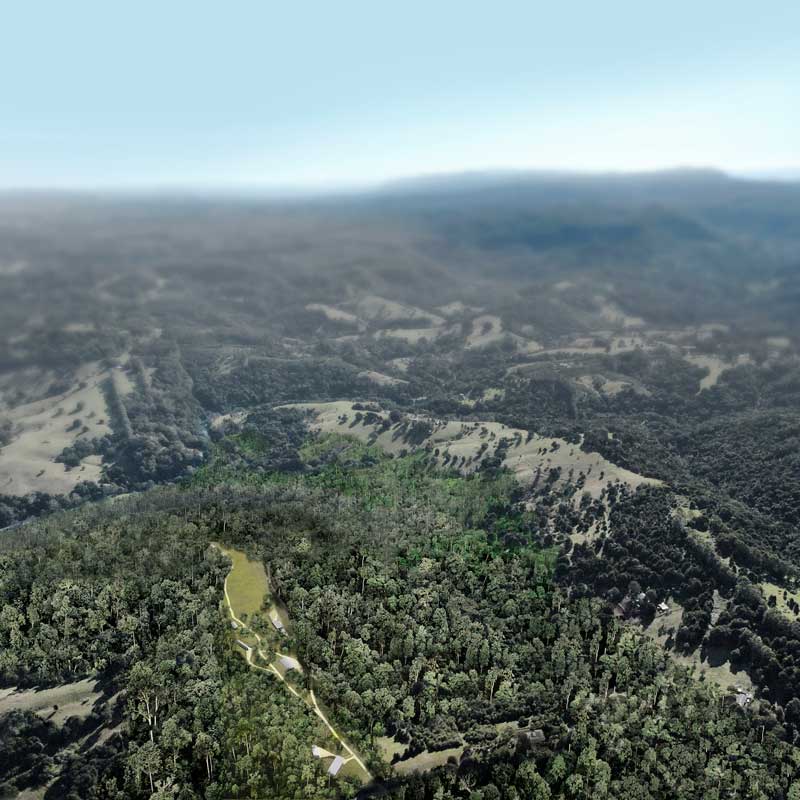
Image © CHROFI
The two sheds were designed within a forest of trees that will be tended to maturity and then selectively harvested. The long lifespan of the trees will require a wait of between 50 to 300 years before the various species fully mature.
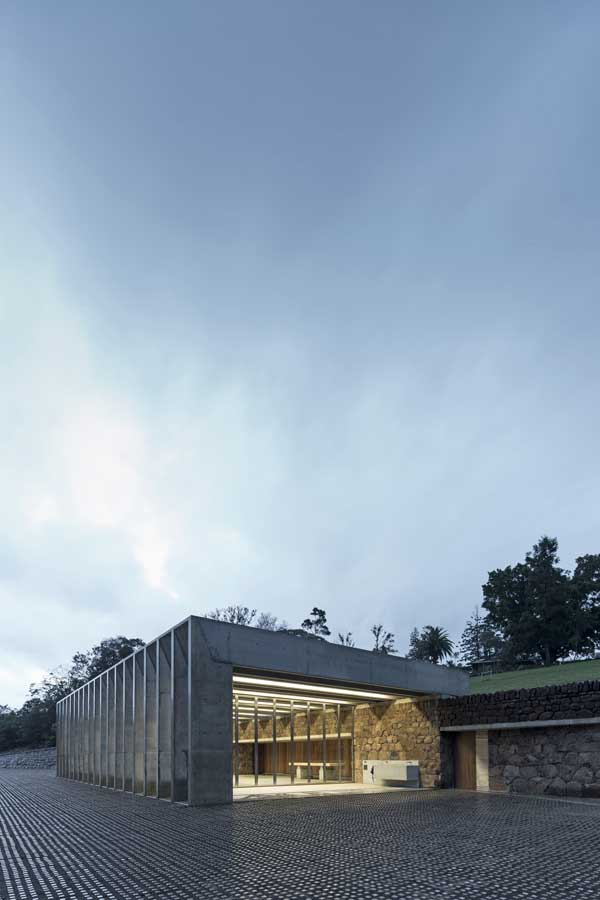
Image © Brett Boardman
We were captivated by this long term vision, a vision that goes beyond one’s lifetime. The design is a close collaboration with our client, one bound in collective understanding of the site, landscape and time. The rainforest timber’s unhurried growth has influenced our approach for inserting architecture in the site with all the buildings being designed to respond to the notion of a 300 year lifecycle.
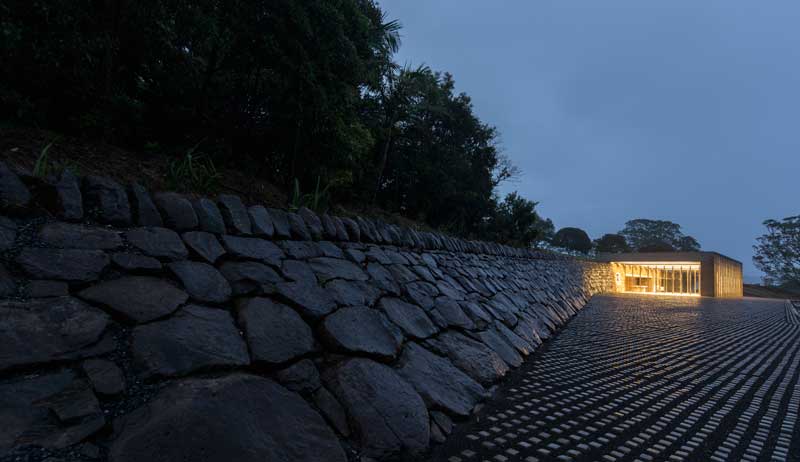
Image © Brett Boardman
The structures were both designed for work, storage and habitation, featuring glass and steel details referencing both ancient ruins, and modern architecture.
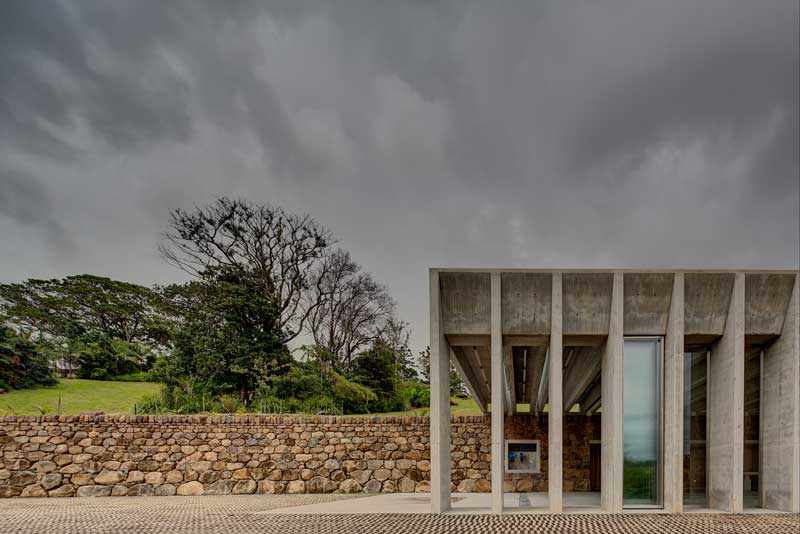
Image © Brett Boardman
The ambition is an elemental and atavistic architecture. Structures that may appear to be a rediscovered ruin from the day they are built. We looked at ruins, forms in nature, and how some structures become cared for across generations. We sought materials that would mature over time, intensifying the building’s qualities rather than degrading it. We settled on concrete for its multiple qualities. As both a precise modern abstract material but also ancient in its quality, concrete serves as a universal material that can be read in multiple ways and deployed for both structure and enclosure.
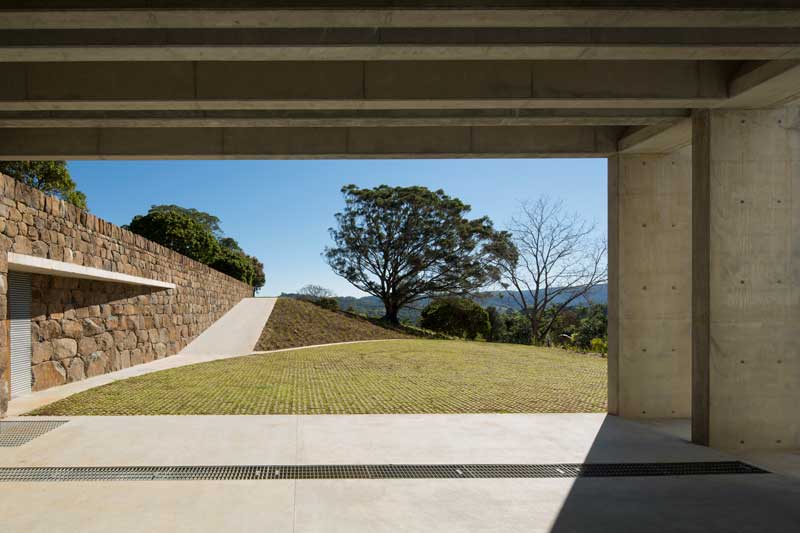
Image © Brett Boardman
The first structures constructed on the site are the two sheds that are part of the delineation between the emerging forest in the valley below and the inhabited domestic landscape toward the ridge above. The two sheds have been conceptually designed inverse of each other. The first Shed “buttressed against the fall of the land, grasps the space within its folded structure”, while the second Shed embraces a more open structure with a soaring roof that projects out from the hillside to provide cover for a mute container beneath.
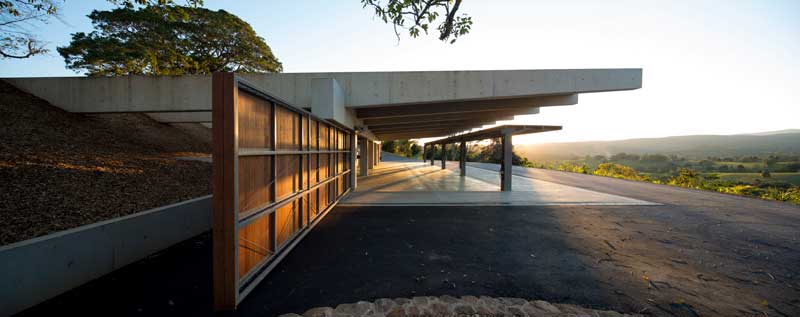
Image © Brett Boardman
Shed 1 is composed of a main space with a lower workshop space to one side contained within the retained hillside. The structure frames views into the landscape – the staccato of the forest in front when viewed through the rhythm of the columns, the visual release upwards and outwards to the open paddock and fig tree, and the stone wall as it winds into the building.
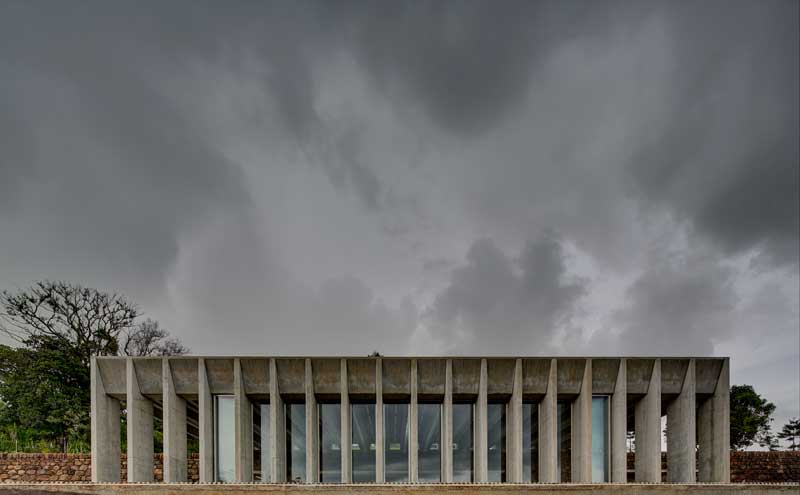
Image © Brett Boardman
Shed 2 comprises a generous hovering roof over a storage enclosure. 20m long concrete roof beams are knitted into the hillside to anchor the 11m cantilevered roof. Beneath the roof, walls that unfold to facilitate materials handling and storage.
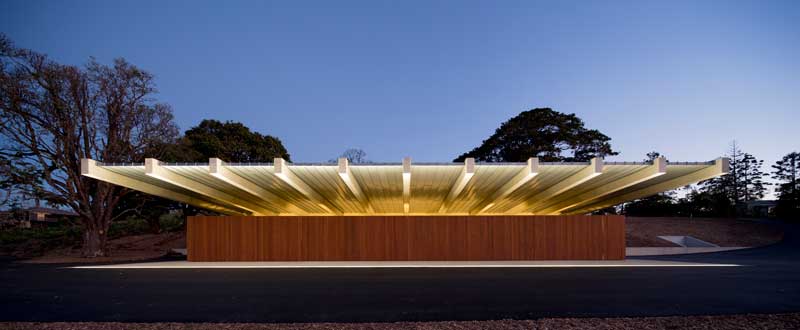
Image © Brett Boardman
In fullness of time, both structures will only be revealed upon arrival at their immediate setting intensifying their presence in the landscape. In the mean time, these quiescent structures will continue to look out to the forest waiting for its emergence.
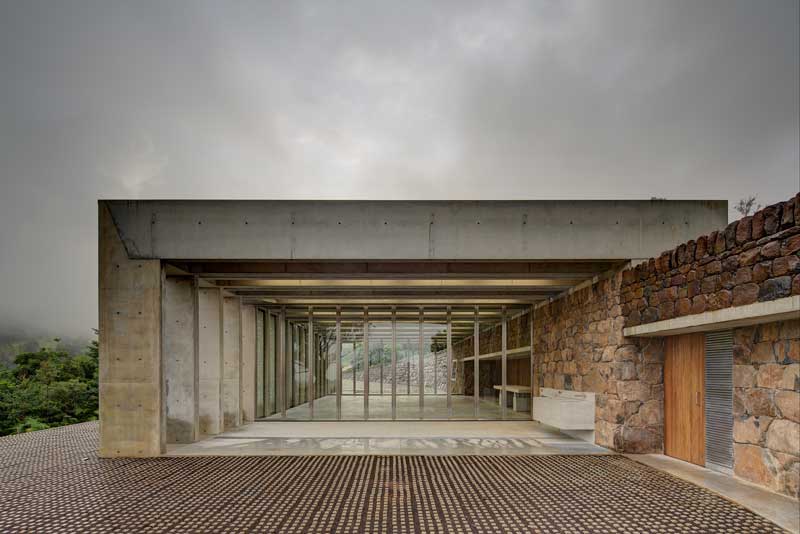
Image © Brett Boardman
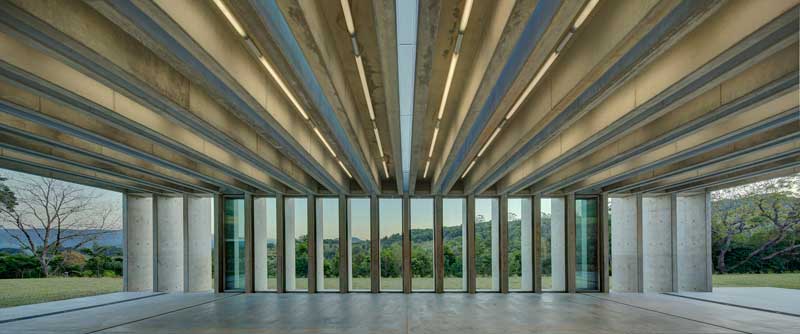
Image © Brett Boardman
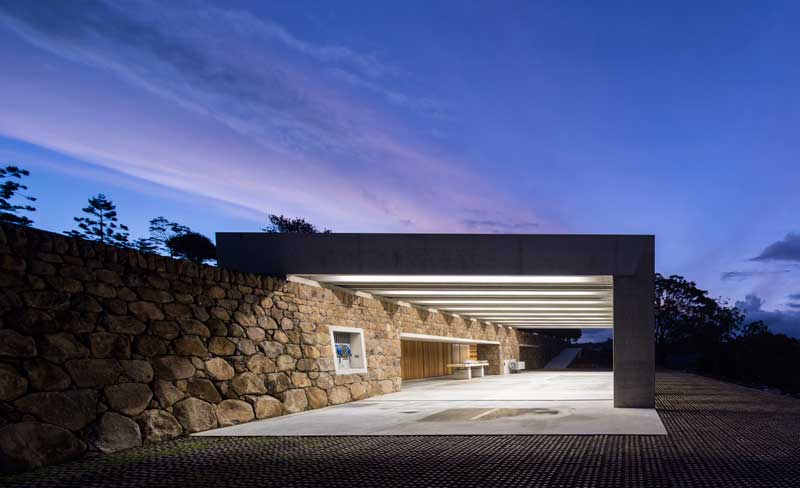
Image © Brett Boardman
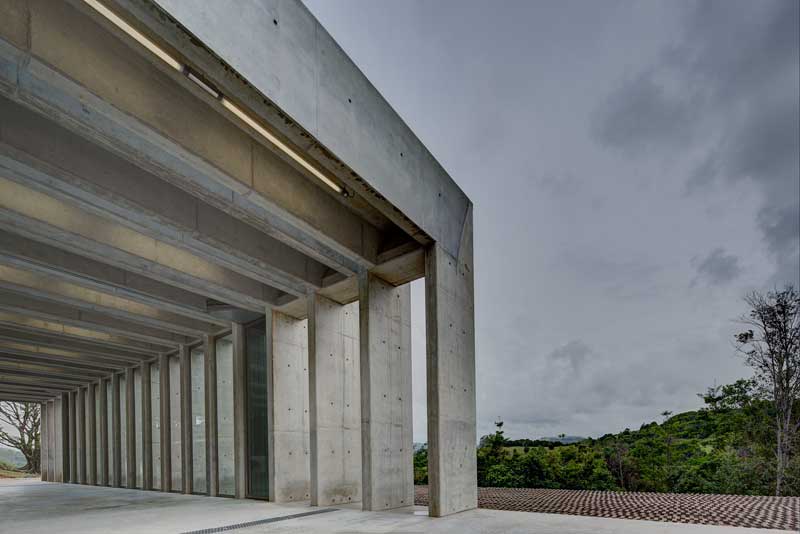
Image © Brett Boardman

Image © Brett Boardman

Image © Brett Boardman
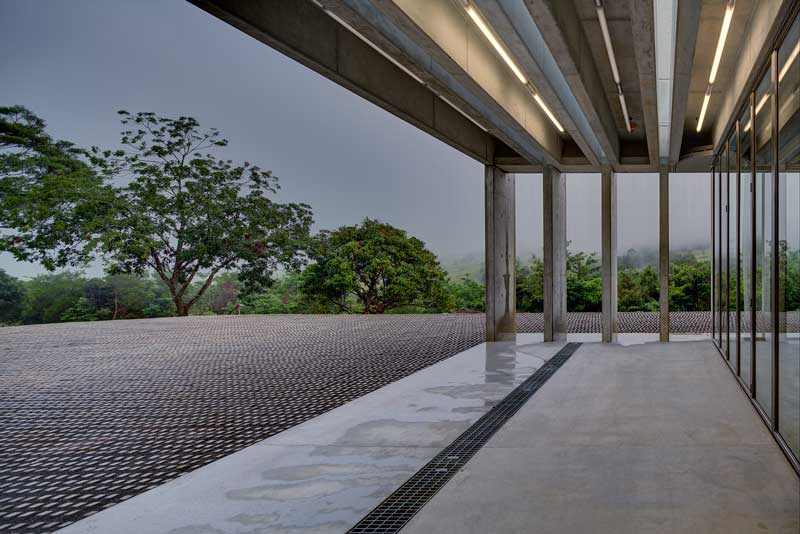
Image © Brett Boardman
Facts:
Project: Lune de Sang Sheds
Location: Northern NSW, Australia
Client: Private
Program: Storage & Workshop
Area: Shed 1, 320 m²; Shed 2, 360 m²
Service: Design, Documentation & Site Services
Status: Built
Architect: CHROFI
Project Director: John Choi
Project Leader: Toby Breakspear
Project Team: Steven Fighera, Tai Ropiha, Jerome Cateaux, Clinton Weaver, Linda Lam, Felix Rasch
Site Manager: Tony Kenway
Structural Engineer: DW Knox & Partners
Civil, Hydraulic & Electrical Engineer: Northrop
Lighting Consultant: Electrolight, Architectural Lighting Design
Planner: Planners North
Cost Planner: QS Plus
Bushfire & Waste Water: BCA Check
Certifier: Techton
Builder: Cedar Creek Constructions
Director: Lyle Le Sueur
Foreman: Karl Vikstrom
Stonemason: Robert Hartnett and Sons
Operable Doors: Steve Jones, Monarch Doors
Joinery: Men Joinery
Photography: Brett Boardman
*All images and information courtesy of CHROFI.






